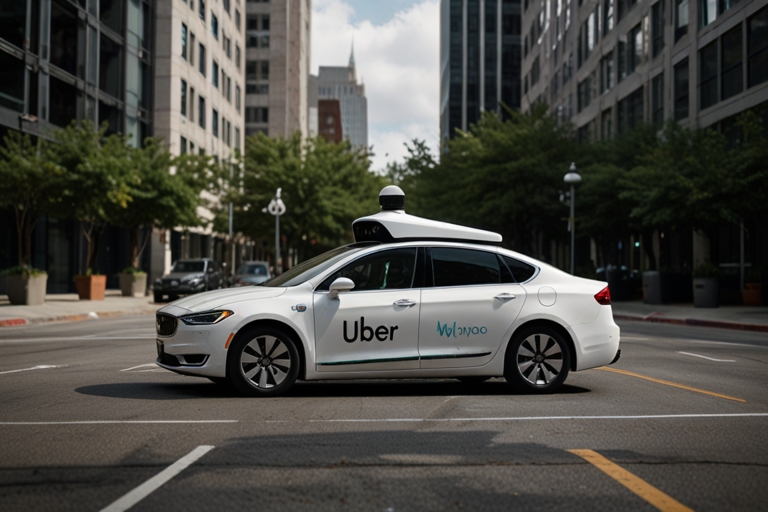
TL;DR
- Uber and Waymo launch their joint robotaxi service in Atlanta, covering 65 square miles.
- The move builds on their existing partnership already live in Austin.
- Uber now runs 1.5 million annual AV trips, while Waymo manages 250,000 weekly paid rides in four cities.
- Users can hail Waymo robotaxis via the Uber app, with the same fare as UberX or Comfort.
- Waymo oversees autonomous operations; Uber handles maintenance and customer interface.
- Atlanta marks Waymo’s fifth city in its expanding U.S. robotaxi network.
Expanding the Future of Autonomous Mobility
Uber and Waymo have officially launched their commercial robotaxi service in Atlanta, opening up another major U.S. city to the future of autonomous transportation. Announced on Tuesday, this expansion builds on their ongoing pilot in Austin, Texas, and marks a significant milestone in the companies’ shared roadmap.
Covering approximately 65 square miles, this rollout introduces Waymo’s autonomous vehicles to Atlanta’s urban ecosystem—available directly through the Uber app. Riders can now opt for a Waymo vehicle instead of a human-driven car in a seamless, hybrid experience.
The Rise of the “Waymo on Uber” Model
Unlike Waymo’s other deployments in Phoenix, San Francisco, Los Angeles, and Austin, where customers must use the dedicated Waymo One app, the Atlanta integration allows Uber users to directly hail autonomous rides. Customers can configure their Uber preferences to increase the likelihood of being matched with a Waymo vehicle.
“When matched with a Waymo, riders use the Uber app to unlock the vehicle, open the trunk, and start their journey,” a company spokesperson explained.
This dual-brand approach represents a broader autonomy-as-a-service model, with Uber controlling the user interface and Waymo overseeing the technology backend.
How the Partnership Works
The Waymo-Uber partnership splits roles strategically to optimize both technological performance and user experience:
| Responsibility | Handled By |
| Vehicle operations & tech | Waymo |
| Customer app interface | Uber |
| Charging & maintenance | Uber |
| Roadside assistance | Waymo |
| Fleet expansion management | Shared |
Waymo provides the AV platform and handles real-time autonomous monitoring, roadside support, and AV system performance. Uber, in turn, manages customer access, app functionality, fleet cleaning, and recharging.
AV Footprint: From Austin to Atlanta
Uber’s autonomous vehicle network has grown steadily in recent years, with partnerships now spanning 18 AV companies. According to the company, its current annual run rate includes 1.5 million autonomous mobility and delivery trips.
Waymo’s existing operations include 250,000 paid weekly robotaxi rides across its four other cities. With the launch in Atlanta, the Alphabet-owned company expects those numbers to climb significantly.
“Our fleet in Atlanta is in the dozens and will grow into the hundreds,” a Waymo representative told TechCrunch.
Waymo’s Austin fleet already exceeds 100 robotaxis, providing a clear template for scalable AV deployment in new urban markets.
Equal Pricing, Premium Technology
In a key move for adoption, robotaxi fares in Atlanta will match UberX, Comfort, and Comfort Electric ride levels. There’s no AV premium—just the option for a self-driving experience.
This pricing strategy is aimed at mainstreaming autonomous rides and normalizing public interaction with the technology.
“We’re focused on creating a product that feels familiar and frictionless,” Uber’s head of AV partnerships stated during the launch.
Uber & Waymo’s Robotaxi Expansion
| Metric / Feature | Value / Insight | Source |
| Service Coverage in Atlanta | 65 square miles | TechCrunch |
| Cities Where Waymo Now Operates Commercially | Austin, Phoenix, Los Angeles, San Francisco, Atlanta | Waymo Blog |
| Waymo Paid Rides Weekly | 250,000 | Waymo |
| Uber Annual AV Trips | 1.5 million | Uber |
| Fleet Size in Austin | Over 100 robotaxis | TechCrunch |
| Number of AV Partnerships by Uber | 18 | Uber |
| Launch Year of Waymo-Uber Atlanta Service | 2025 | Uber |
| Robotaxi Fare Pricing in Atlanta | Equal to UberX or Comfort | Waymo |
Why Atlanta?
Atlanta is a major logistics hub with diverse terrain, urban density, and a growing population—making it an ideal testing ground for next-gen transportation solutions. The city also has experience hosting autonomous pilot programs, including prior AV tests from companies like Cruise and Aurora.
“This is a city with innovation readiness and a strong consumer base open to mobility alternatives,” said an Uber spokesperson.
Atlanta’s inclusion not only strengthens Waymo’s reach but positions Uber to further localize AV services in high-potential urban areas across the Southeast.
Market Strategy: Blending Automation and Human Options
What differentiates “Waymo on Uber” is the hybrid ride-hailing model, where robotaxis and human drivers coexist. This flexibility ensures that riders uncomfortable with autonomous vehicles can easily switch to a standard ride through a simple in-app prompt.
This model also buffers against technical outages or geographic restrictions, allowing for gradual adoption without sacrificing service availability.
Regulatory Landscape and Public Acceptance
Both Uber and Waymo are deploying AVs within state-approved regulatory frameworks, and public support continues to grow. Still, both companies emphasize safety, transparency, and rider education as key focus areas.
In states like Arizona and Texas, regulators have provided clearer lanes for AV expansion. In Georgia, Uber and Waymo are working with city authorities to ensure compliance with safety and traffic guidelines.
Looking Ahead: A Model for Expansion
As Uber and Waymo expand, Atlanta could serve as a blueprint for AV integration into other tier-1 U.S. markets like Chicago, Miami, or Dallas. The model allows for operational sharing, cost control, and user onboarding—all while keeping Uber’s platform central to the ride-hailing experience.
Both companies have confirmed their intention to scale robotaxi fleets into the hundreds by 2026, aided by rising investment in clean mobility infrastructure.






